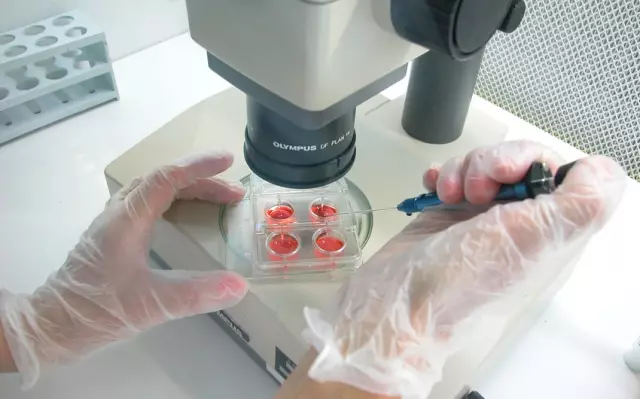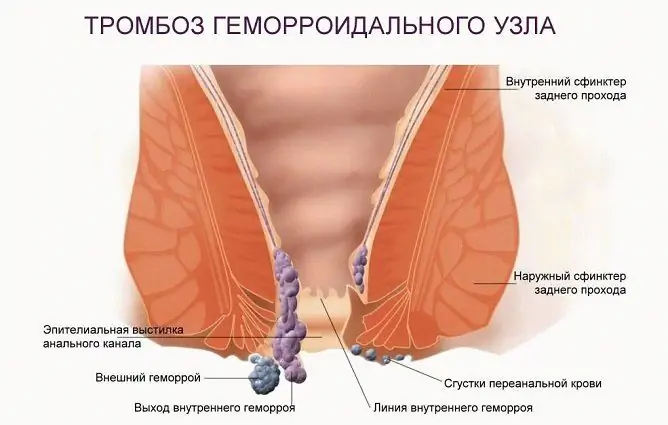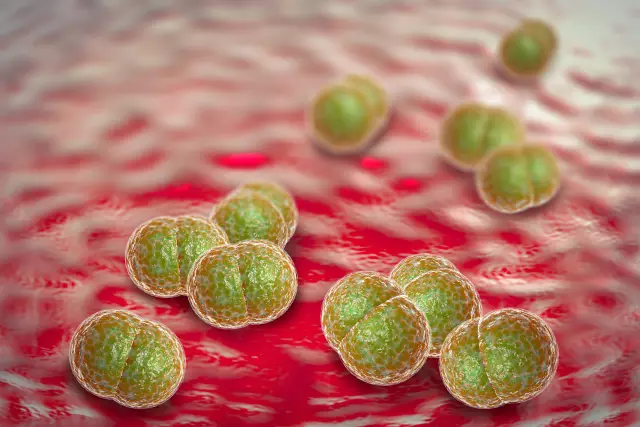- Author Rachel Wainwright [email protected].
- Public 2023-12-15 07:39.
- Last modified 2025-11-02 20:14.
6 types of cancer that are successfully treated
People are afraid of cancer diagnoses, perceiving them as a sentence. In fact, this is not always the case: today it is possible to cure certain types of cancer (and there are more than 200 of them). Of course, the result of the doctors' efforts depends on many factors, including the state of the organism of a particular patient, his psychological attitude, the promptness of seeking qualified help, consistency and persistence in treatment.

Source: depositphotos.com
Nevertheless, medicine has made significant strides in saving the lives of patients diagnosed with some types of malignant neoplasms. We want to tell the readers about them.
Mammary cancer
Malignant neoplasm of the breast is the second most common type of cancer in the world. About a million cases of this disease are diagnosed annually. In industrialized countries, breast cancer is very widespread. The fact is that, in addition to a burdened family history and the characteristics of a woman's hormonal background, the main risk factors for breast cancer are the so-called diseases of civilization (diabetes mellitus, obesity), smoking, alcohol abuse, abortion and refusal to breastfeed.
The main method of treatment for breast cancer is surgical: the tumor is removed, and with its small size, there is a chance to remove not the entire breast, but only the neoplasm itself. Methods of treatment are actively being developed, for example, cryomammotomy (freezing of a tumor with its subsequent removal).
The success of this type of cancer treatment directly depends on the promptness of seeking medical help. Doctors remind women to become familiar with self-examination techniques and regular medical examinations. Upon reaching the age of 40, a woman should conduct an independent breast palpation on a monthly basis and at least once a year visit an antenatal clinic. With early detection of a tumor and timely adequate assistance, the probability of cure for breast cancer is almost 100%.
Cervical cancer
The main cause of problems associated with cervical cancer treatment is difficult diagnosis. In the initial stages, the disease is asymptomatic or manifests itself as a general malaise. Only a gynecologist can detect a tumor during an examination, so such examinations should be regular.
In addition, the risk factors for cervical cancer should be kept in mind:
- human papillomavirus (HPV) infection;
- smoking;
- a large number of sexual partners;
- early onset of sexual activity.
The link between cervical cancer and HPV has been scientifically proven. It has been established that the probability of infection during sexual contact is about 75%, but during normal functioning of the immune system, the vast majority of pathogenic microorganisms die. However, almost 90% of women of reproductive age are considered to be infected with HPV.
Modern medicine is successfully fighting cervical cancer. Treatment in this case requires surgery, it can also include chemotherapy or radiation therapy. When treated in the early stages of the disease, almost 100% survival is ensured. Among those who began to fight cancer in the second stage, about 80% are cured.
Skin cancer
Skin cancer (of various types) accounts for about 15% of all cancers. Basal cell carcinoma and squamous cell carcinoma are most common (in 88.2% of cases). These types of neoplasms are not the most dangerous, since they rarely metastasize to other organs and tissues. Melanoma (aggressive and rapidly metastatic tumor) is much more severe, accounting for 11% of cases.
The success of skin cancer treatment is associated primarily with early detection. The fact is that skin neoplasms are easy to diagnose visually. It is enough to notice atypical changes in the skin and especially the condition of birthmarks to suspect a pathology. The rapid increase in the number of moles, changes in their color, clarity of boundaries, surface structure or size is a reason for an immediate visit to a doctor.
In the early stages, skin cancer can be cured with surgery and radiation therapy. With timely treatment, the survival rate of patients with melanoma ranges from 89 to 95%.
Prostate cancer
Cancer of the prostate gland (prostate) is one of the most common malignant neoplasms in men. This is an ailment of adulthood, the risk of developing which increases when a person reaches 50 years of age. In the early stages, the pathology is successfully treated: with a small tumor at the time of detection, the probability of recovery is 95%.
Unfortunately, in most cases, prostate cancer is diagnosed late. The reason is not only that tumor growth may be asymptomatic. Often, men are shy or afraid to seek medical help, even when they experience noticeable discomfort. You need to see a doctor if you have any of the following:
- discomfort when urinating or ejaculating;
- the presence of traces of blood in semen or urine;
- feeling of incomplete emptying of the bladder;
- increased urination (including at night).
Men who have reached adulthood should monitor their health and visit a urologist at least once a year or at the first appearance of unpleasant symptoms.
Testicular cancer
The disease is manifested by a painful compaction in the scrotum, its enlargement and pain in the lower abdomen. Testicular cancer can affect men even in adolescence. The average age of the sick is 40 years.
The main method of dealing with this type of cancer is surgical removal of the testicle, followed by chemotherapy and radiation therapy. With a timely visit to a doctor, the probability of a complete cure is estimated at 96%.
Colorectal cancer
With adequate treatment in the early stages, rectal or colon cancer can be cured in 90% of cases. The following symptoms may indicate the presence of pathology:
- the presence of blood in the stool;
- bowel problems (constipation or diarrhea);
- feeling of incomplete bowel movement after a bowel movement;
- discomfort or persistent abdominal pain;
- rapid weight loss;
- constant fatigue;
- dyspnea;
- dizziness.
The main risk factor is considered to be a burdened family history. The likelihood of colorectal cancer increases with age: 85% of cases occur in patients over 65.
The best way to prevent colon or rectal cancer is through regular check-ups. Many doctors recommend that people who have crossed the 40-year mark visit a proctologist annually and take a fecal occult blood test, and, if necessary, undergo a colonoscopy. Especially vigilant should be those in whose families cases of the named disease were observed.
All types of cancer described are successfully treated at an early stage. Therefore, it is important to show cancer alertness: pay attention to the appearance of alarming symptoms and regularly undergo a medical examination.
YouTube video related to the article:

Maria Kulkes Medical journalist About the author
Education: First Moscow State Medical University named after I. M. Sechenov, specialty "General Medicine".
Found a mistake in the text? Select it and press Ctrl + Enter.






